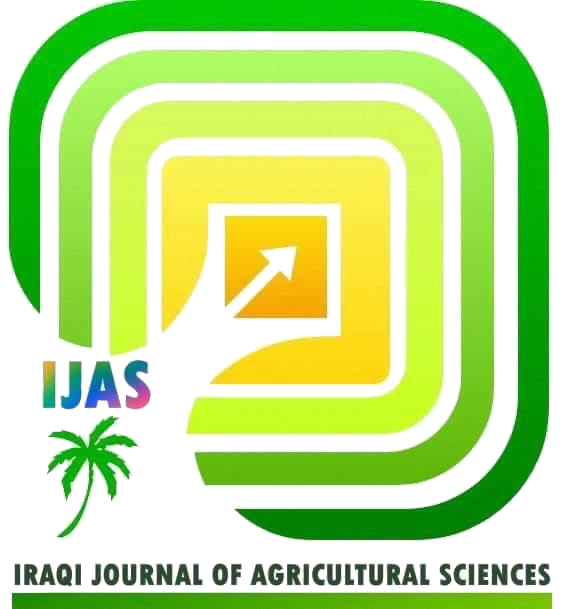ANATOMICAL STUDY FOR SUBGENERA PRUNUS L. AND CERASUS PERS. (ROSACEAE) LEAVES IN KURDISTAN REGION-IRAQ
DOI:
https://doi.org/10.36103/wvap9e21Keywords:
leaf blade, midrib, petiole, trichomes, SEM.Abstract
Mature leaves fully expanded, undamaged were used in this study for leaf anatomy (blade, midrib and petiole) for 12 taxa of subgenera Prunus and Cerasus (P. cerasifera Ehrh., P. domestica subsp. domestica L., P. domestica subsp. syriaca (Borkh.) Janchen ex Mansfeld, P. domestica subsp. insititia (L.) C. K. Schneid, P. domestica subsp. italica (Borkh.) Gams ex Hegi, P. armeniaca var. armeniaca, P. armeniaca cv. Saeede Meraime, P. microcarpa var. pubescens (Bornm.) Meikle, P. microcarpa var. microcarpa, P. brachypetala (Boiss.) Walp., P. mahaleb L. and P. cerasus L.). Also trichome length and frequency on areole part of leaf blade for each taxon were measured. All taxa were characterized by bifacial mesophylls which consist of palisade parenchyma in the upper side and spongy layer in the lower side. The investigated taxa divided according to the number of palisade parenchyma layers in three groups. The shape of midrib, petiole transverse section and shape of the vascular bundles were important diagnostic values used for identifications of taxa. The leaves of all investigated taxa of subgenera Prunus and Cerasus have unicellular trichomes with different shapes kinds present on leaves blade of all studied taxa. Mostly the trichomes in abaxial side areole longer than the trichomes in the adaxial side, also the frequency of trichoms in the abaxial face was significantly higher than in the adaxial face.
References
1. Al-dabbagh, S. T. S., 2022. Anatomical variations of leaves petioles in some taxa of the genus Trifolium L. (Fabaceae) in Iraq. Iraqi Journal of Agricultural Sciences, 53(4):867-877. https://doi.org/10.36103/ijas.v53i4.1599
2. Al-Mukhtar, K. A., S. M. Al-Allaf and A. A. Al-Attar., 1982. Microscopic preparations. First edition. Ministry of Higher Education and Scientific Research. Baghdad-Iraq. (In Arabic). http://mohesr.gov.iq/ar/
3. Bacelar, E. A., C. M. Correia, J. M.
Moutinho-Pereira, B. C. Goncalves, J. I. Lopes, and J. M. G. Torres-Pereira., 2004. Sclerophylly and leaf anatomical traits of five field-grown olive cultivars growing under drought conditions. Tree Physiol. 24:233–239. https://doi.org/10.1093/treephys/24.2.233
4. Bird, S. M and J. E. Gray., 2003. Signals from the cuticle affect epidermal cell differentiation. New Phytologist 157: 9-23. https://doi.org/10.1046/j.1469-8137.2003.00543.x
5. Çalışkan, M., 2000. The metabolism of oxalic acid. Turk J Zool 24:103–106.
6. Coyner, M. A., R. M. Skirvin, M. A. Norton and A. G. Otterbacher., 2005. Thornlessness in blackberries: A review. Small Fruits Review 4:83–106. https://doi.org/10.1300/J301v04n02_09
7. Crang, R., S. Lyons-Sobaski and R. Wise., 2018. Epidermis. In: Plant Anatomy. 279–318. https://doi.org/10.1007/978-3-319-77315-5_9
8. Eric, T. J., V. A. Michael, and W. E. Linda, 2007. The importance of petiole. Botanical Journal of the Linnean Society, 153 (2): 181-191.
https://doi.org/10.1111/j.1095-8339.2006.00601.x
9. Feng, L.G., X. F. Luan, J. Wang, W. Xia, M. Wang, and L.X. Sheng., 2015. Cloning and expression analysis of transcription factor rrttg1 related to prickle development in rose (Rosa rugosa). Arch. Biol. Sci. 67:1219–1225. https://doi.org/10.2298/ABS150310098F
10. Finn, C. E., C. Kempler and P. P. Moore., 2008. Raspberry cultivars: What’s new? What’s succeeding? Where are breeding programs headed? Acta Hort. 777:33–40. https://doi.org/10.17660/ActaHortic.2008.777.1
11. Kellogg, A. A., T. J. Branaman, N. M. Jones, C. Z. Little and J. D. Swanson., 2011. Morphological studies of developing Rubus prickles suggest that they are modified glandular trichomes. Botany 89:217–226. https://doi.org/10.1139/b11-008
12. Konyar, T. S., N. Öztürk and F. Dane., 2014. Occurrence, types and distribution of calcium oxalate crystals in leaves and stems of some species of poisonous plants. Botanical Studies 55-32 https://doi.org/10.1186/1999-3110-55-32
13. Lersten, N. and H. Horner., 2000. Calcium oxalate crystal types and trends in their distribution patterns in leaves of Prunus (Rosaceae: Prunoideae). – Plant Syst. Evol. 224: 83–96. https://doi.org/10.1007/BF00985267
14. Lersten, N. R. and H. T. Horner, 2004. Calcium oxalate crystal macropattern development during Prunus virginiana (Rosaceae) leaf growth. Canadian Journal of Botany, 82(12), pp.1800-1808. https://doi.org/10.1139/b04-14
15. Marchi, S., R. Tognetti, A. Minnocci, M. Borghi, and L. Sebastiani., 2008. Variation in mesophyll anatomy and photosynthetic capacity during leaf development in a deciduous mesophyte fruit tree (Prunus persica) and an evergreen sclerophyllous
Mediterranean shrub (Olea europaea). Trees (Berl.) 22:559–571. https://doi.org/10.1007/s00468-008-0216-9
16. Nikolic, N. P, L. J. Merkulov, S. Pajević and B. Krstić., 2005. Variability of Leaf Anatomical Characteristics in Pedunculate Oak Genotypes (Quercus robur L.). Proceedings of the Balkan Scientific Conference of Biology, Plovdiv, 19-21 May 2005, 240-247. https://doi.org/10.2298/ZMSPN0611095N
17. Payne, W. W., 1978. A glossary of plant hair terminology. New York Botanical Garden, Bronx, NY 10458. Brittonia, 30(2), pp. 239-255. https://doi.org/10.2307/2806659
18. Poonam, V., G. S. Kumar, L. C. Reddy, R. K. Jain, S. Sharma and K. A. Prasad., 2011. Chemical constituents of the genus Prunus and their medicinal properties. Current medicinal chemistry; 18(25):3758-3824. https://doi.org/10.2174/092986711803414386
19. Rudall, P., 2007. Anatomy of Flowering Plants: An Introduction to Structure and Development. (3rd ed.). Cambridge: Cambridge University Press p.145. https://doi.org/10.1017/CBO9780511801709
20. Saadi, A. I. and A. K. Mondal., 2011. Studies on the calcium oxalate crystals of some selected aroids (Araceae) in Eastern India. Advances in Bioresearch 2 (1):134-143. https://doi.org/10.5897/AJPS11.163
21. Suárez, G. M., A. M. C. Ruffino, M. E. Arias and P. L. Albornoz., 2004. Anatomía de hoja, fruto y semilla de Cupania vernalis (Sapindaceae), especie de importancia en frugivoría. Lilloa 41: 57-69. https://www.lillo.org.ar/journals/index.php/lilloa/article/view/1323
22. Xiang, C .L., Z. H. Dong, H. Peng and Z. W. Liu., 2010. Trichome micromorphology of the east asiatic genus Chelonopsis (Lamiaceae) and its systematic implications. Flora 205, 434–441. https://doi.org/10.1016/j.flora.2009.12.007
23. Xiao, K., X. H. Mao, Y. L. Lin, H. B. Xu, Y. S. Zhu and Q. H. Cai et al. 2016. Trichome, a functional diversity phenotype in plant. Mol Biol. (1):1–6.


2.jpg)
 https://orcid.org/0000-0002-5774-5906
https://orcid.org/0000-0002-5774-5906 



